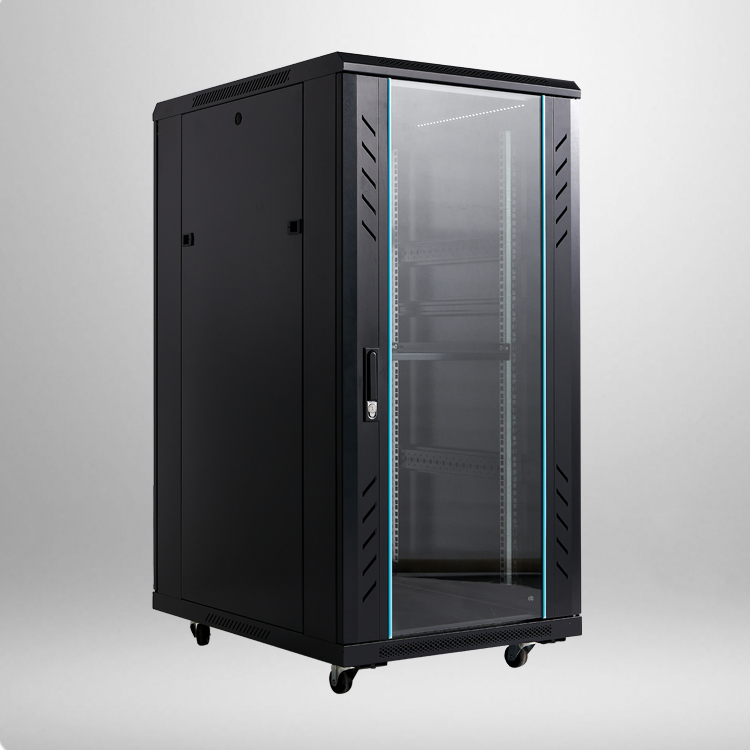
Network cabinets are widely used in various fields, such as network cabling, computer rooms, broadcasting and television, etc. They can accommodate switches, fiber adapters, fiber distribution frames and other equipment in a rectangular cabinet composed of frames and panels. They have the functions of electromagnetic isolation, noise isolation, ventilation and heat dissipation, shock resistance, corrosion resistance, etc., which can ensure the stable and reliable operation of the equipment, as well as the convenience and safety of installation, maintenance and management.
According to the types, network cabinets include server cabinets, wall-mounted cabinets, network cabinets, standard cabinets, intelligent protection outdoor cabinets, etc. The capacity value ranges from 2U to 42U. Different types of network cabinets have different application scenarios and requirements.
Server cabinets are mainly used for storing servers, storage devices, UPS and other equipment in data centers, enterprises, schools, etc. They have high load-bearing capacity, good heat dissipation performance, strong compatibility and scalability.
Wall-mounted cabinets are mainly used for small-scale network projects, such as hotels, offices, shops, etc. They can be installed on the wall or on the floor, saving space and facilitating wiring.
Network cabinets are mainly used for wiring projects, mainly storing routers, switches, wiring frames and other network equipment and accessories. They have good ventilation and dust prevention, flexible configuration and easy management.
Standard cabinets are mainly used for standard 19-inch equipment, such as servers, switches, patch panels, etc. They have simple structure, low cost and wide application.
Intelligent protection outdoor cabinets are mainly used for outdoor communication equipment, such as base stations, transmission equipment, power supply equipment, etc. They have high protection level, strong anti-theft and anti-vandalism, intelligent temperature control and remote monitoring.


